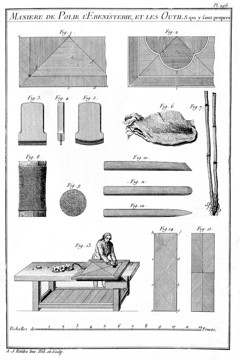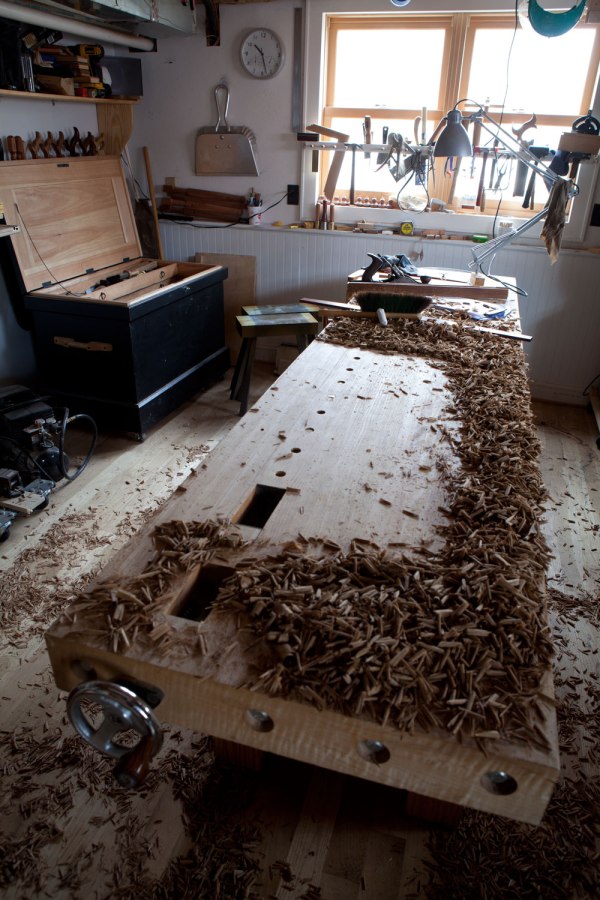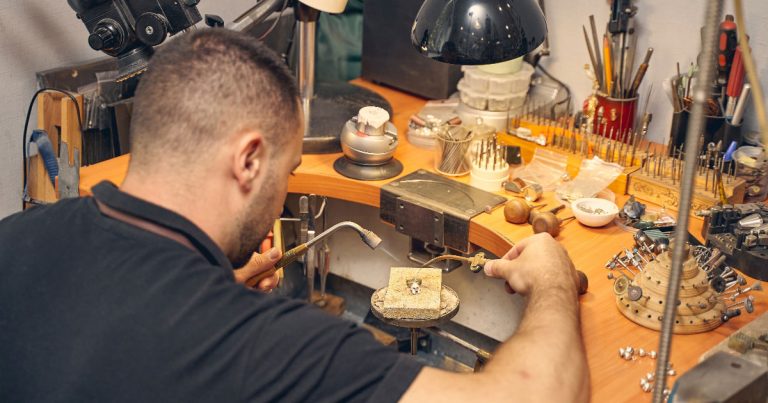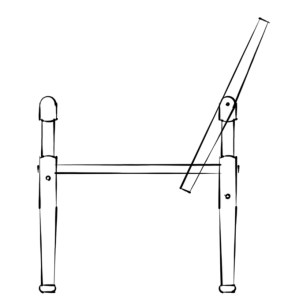Part Two: Planting and Nurturing the Seeds of 'To Make As Perfectly As Possible' –

Part Two: Philippe LaFargue entered my studio as a post-graduate intern from Ecole Boulle. Since intern abuse is not in my blood (I know, it makes me a bad fit for Washington, D.C.) I refrained from having him do anything more than translate the Table of Contents of “L’Art du Menuisier” and tell me about some of the sections on marquetry.
The Seed that Pop planted, Philippe nurtured.
Fast forward to 2009. My old friend and colleague Michele Pagan, a textiles conservator, had begun working with me to develop some innovative upholstery conservation techniques the year before. On our way back from the lunch room one day she stopped to talk to another colleague and the conversation revolved around some translation Michele was doing of a French dye treatise. Suddenly a very bright light went on in my head.
I was starting to work on a monograph about historic finishing and wanted to know about some odd tools represented in Roubo plate 296. Could she help explain what they were used for?
After looking at the plate in the gigantic volume, she said, “Sure.” She did, and the rest is history.
The Seed that Pop Schindler planted and Philippe nurtured was brought to fruition by Michele’s translation.
Last fall we pitched a wild idea to Chris Schwarz and he graciously agreed to partner with us in bringing Roubo to the modern cabinetmaker. Rather than translating, annotating and interpreting the whole of “L’Art du Menuisier,” we decided to focus on, well, the parts that interested me. Some time late next year we will present the first of the Lost Art Press volumes, which will contain the following sections (you can refer to original page numbers):
“To Make As Perfectly As Possible: Roubo on Marquetry”
An Essay on Appreciating and Measuring the Value of Hand Work p1242 -1254
Conclusion of the Art of Carpentry p1255-1264
The different woods appropriate for veneering pp766-814
Section I: Description of “Wood from India” and its qualities, relative to cabinetry;
Section II: French woods appropriate for cabinetry
Section III: Different dye compositions appropriate for tinting wood and the manner of using them
Section IV: Thinning of wood for veneer-making
Description of tools of veneering
Section V: Appropriate carcass construction for veneering, their manner of construction
Simple Veneering: general instructions pp. 815-865
Section I: Various Kinds of Compositions
a. Manner of cutting and adjusting straight pieces and tools for same
b. Manner of cutting and adjusting curved pieces and tools for same
Section II: Manner of gluing parquetry veneer
a. Finishing of veneer and different types of polish
Ornate Veneering, called mosaic or painted wood pp. 866-897
Section I: Principal rules of perspective absolutely necessary for cabinet makers
Section II: Manner of cutting, shadowing and mounting wooden ornaments
a. Manner of engraving and finishing wooden ornaments
Section III: Representing flowers, fruits, landscape and figures in wood
About the 3rd type of veneering in general (aka Boullework-DCW) pp. 982-1031
Section I: Description of different materials for construction of the 3rd type of veneering
Section II: The skills one uses in the 3rd type of veneering
Section III: How to work the different materials used in marquetry, such as tortoise shell, ivory, horn etc
Section IV: How to construct marquetry and how to finish it
Some time in 2013 we hope to present the second offering, which will (tentatively) contain these portions:
“To Make As Perfectly As Possible: Roubo on Furniture Making”
Proper wood for furniture making pp. 22-39
Different ways of assembling wood pp. 45-48
Proper tools for furniture makers: different types, forms and uses pp. 49-89
Drafting and gluing pp. 273-291
Section I: how to take measurements
Section II: About wood glues
Furniture-Making in general pp. 600-633
Chair making pp. 634 – 664
Making case furniture pp. 743-765
Tools and machines for furniture making pp. 898-981
This project is indeed a labor of love for us, and we render our deepest thanks to the cohort of friends and colleagues who are helping to make it happen. I hope you will find useful what we make of it. Let’s hope we finish it before it finishes us!
— Don Williams




